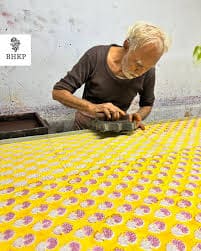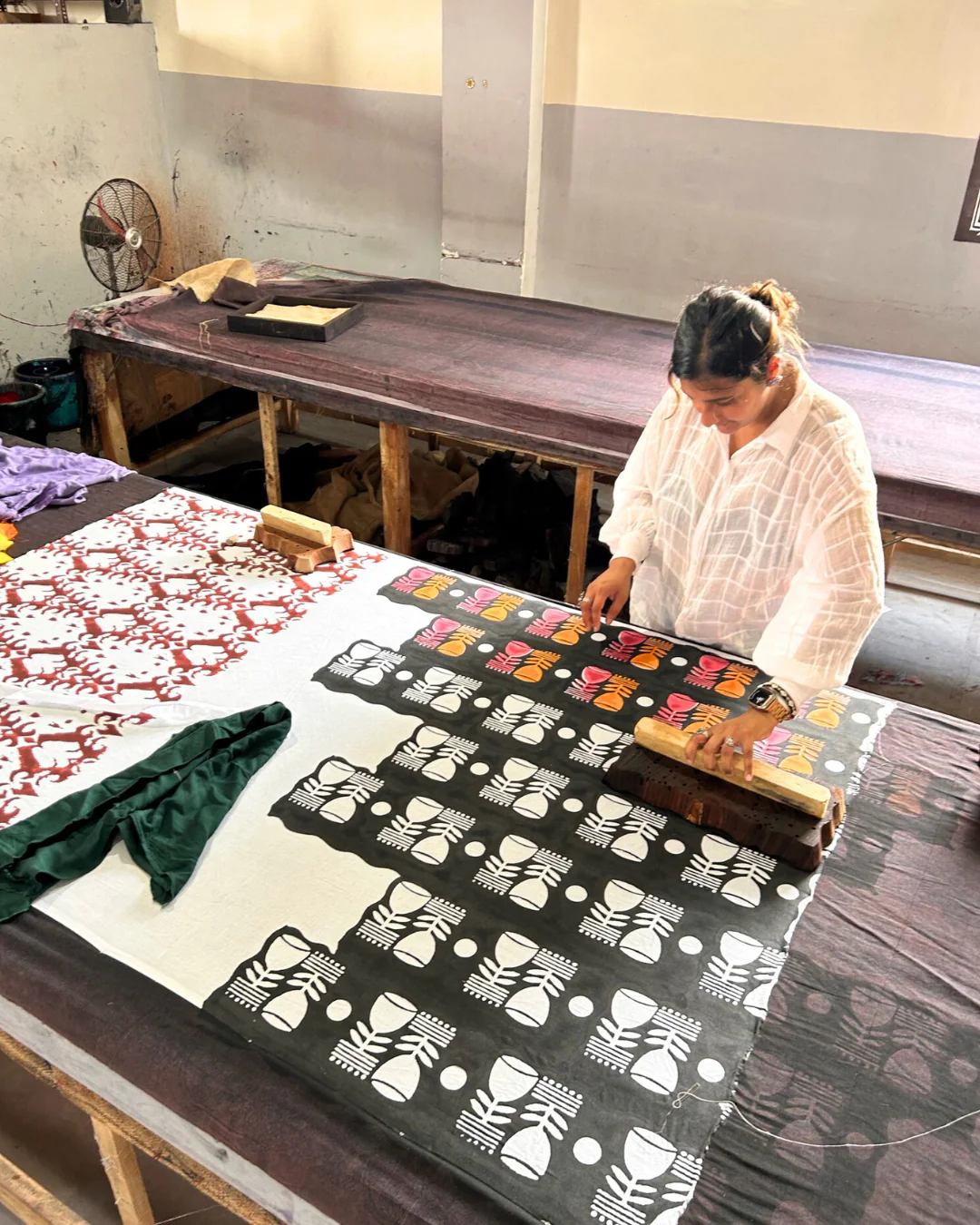
Sanganeri handblock printing
Jaipur is a town that nourishes old values, heritage and is famous for its diverse cultural forms. Sanganeri print is one such print that is connected with the people for 100 years.
Sanganer is a small town situated a few kilometers away from the old Jaipur which was established in the 16th century by the king of Mewar, Maharaja Rajput Raja Rana Sanga. With the passage of time. It grew as a printing center of India due to its enrichment of intricate detailing of hand block printing.
When it comes to the history of Sanganeri prints, it has been there for 300 years, and witness of the Jaipur establishment.
Whenever some special occasion was held there, a special outfit was sent to the Sanganer for printing.
The Sanganeri print gained fame during the British reign and with increasing popularity, Sir George Watts wrote that the Sanganer is the capital of hand-block print.
Chippa community was the major limelight holder who crafted the Sanganeri print from the very early stage to now. Although, the Raja Man Singh. Handover this land(Sanganer) to the Chippa community. This art is passed from one generation to another and they are taking it as a heritage.
About Sanganeri Print
Art started with the wooden hand blocks. Sanganeri print is about the intricate detailing with the fine line texture over the cotton fabric. Our artisans use Sheesham, Sagwan and Rohida wood carved with floral and geometrical designs and the finely ready blocks sent to the printer.
The very first thing the printer does is dipped the fabric into the water for 3 days to clear the dust and impurities of the fabric . After this process, the cloth is dried in the sun for the whole day. Afterward, the printer spread the cloth over a wide table which is mainly used for the printing process.
Then, According to the design and requirement printing will start on the fabric with different colors and the blocks are pressed over the thick clothes and kept in Tari.
Although the designs are imprinted over the clothing with the help of blocks with equal force(no less, no more ) that makes the dye stay longer.
Whereas Azo free dyes and colors are the other main reason for this solid and long-lasting color. The cost increases along with the amount of color making. This was beautifully crafted with the help of three blocks: first is Gadd, secondly rekh is used for the outlines, and Datta is applied lastly. All these blocks are placed in such a manner that all the block prints come in one place.
After the printing, the cloth is dried in the sun and washed with normal water.Then, it goes in the press unit for proper folding.And, the cloth is ready to move in the market.
The overall process is eco-friendly and natural which makes it worldwide famous in countries like Europe, America, England, Japan, France, and many more.
Interesting Facts
- Before the dyers start the process, sand and water is sprinkled on the printing table which is then covered with a wet cloth.
- The history of sanganeri print is almost 300 years old.
- The craft was on the verge of vanishing post independence but was revived again in the early 70’s.
- Under Geographical Indication of Goods Registration and Protection Act.1999, Sanganeri Hand Block Textiles and Furnishings have been recognized to have a unique identity in manufacturing and in belonging to the area of Sanganer.
- Consequently sale of hand block or screen printed product from any other area as Sanganeri will be punishable under the law.
- The water from the river in Sanganer village added radiance to the dyed fabric owing to its softness. Even the clay present in the sand was suitable for bleaching the fabrics under the sun.
- Two types of printing used in Sanganeri printing are: Calico Printing and Do-Rookhi.


